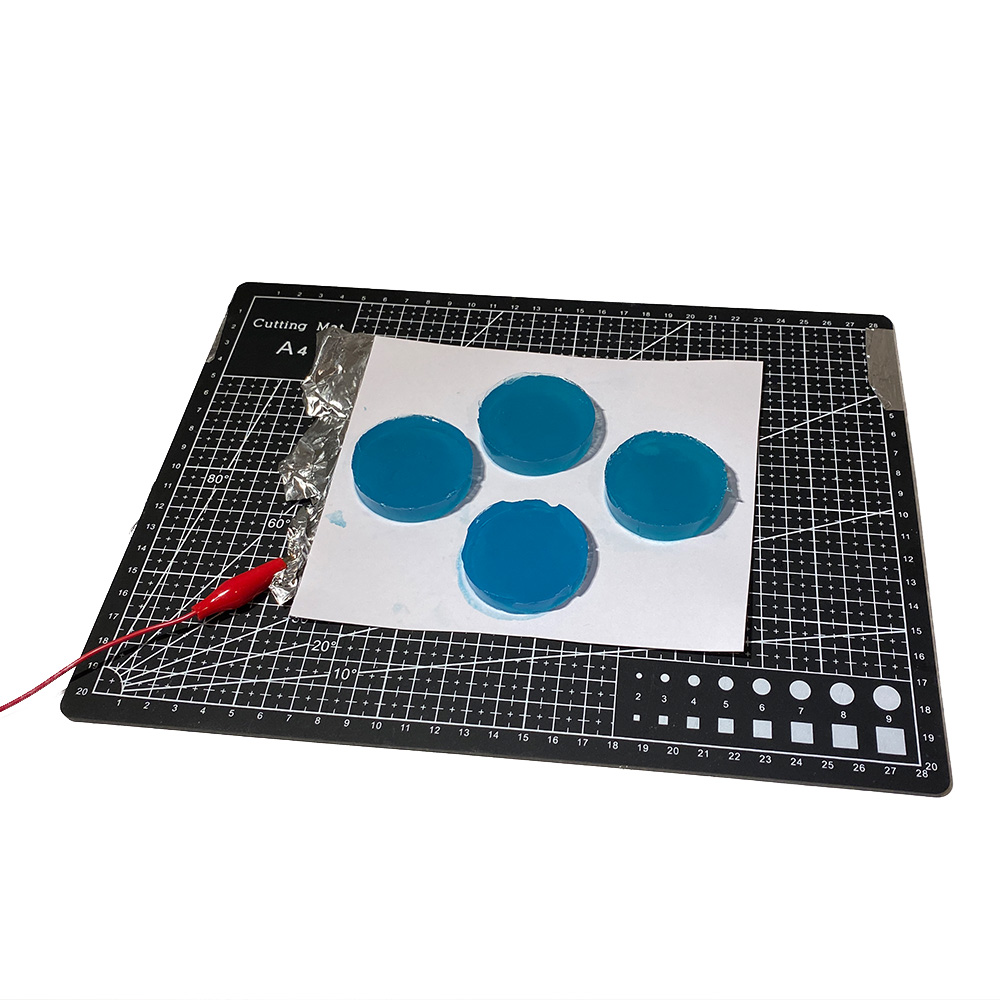
PROCESS
To start this week, I decided to warm up by creating Neil's two step response board (loading and txtr). The process went totally smoothly which is an encouraging sign. However, it took me a while to realize I did not need to include the Baud rate in my run python command.

I have been working with physical materials and human-computer interaction for so long, it is crazy that this is my first time implementing capacitive sensing. Because of this, I got really excited about using new materials as input sensors and did not place as much emphasis on complex pcb's. The first thing I made was a "steam synth", which at first seems completely frivolous.
However, the interesting thing here is that I was only able to get such a responsive fabric by coating with a thin layer of gelatin and allowing it to dry. This is nice because most other techniques require the use of plastic or metal oxides, while this is a biopolymer that has a tiny enviromental footprint and it still inexpensive. In order to show it works, I placed a coated and uncoated fabric in a sealed container with a mug of boiling water and recorded the capacitance change. The sharp drop off is from when I remover the cover.

I also developed a stiffness changing button using the load cell sensor. The idea here is that you could have a rain-responsive cab-calling button. It rained? Button is squishy and raised. If it did not raised, the button is recessed and hard, encouraging you to walk on the nice day.
I got more invested in hydrogels, and was interested to see if I could make a touch sensor without adding any new circuitry. I would do this by making hydrogel pads, but vary the amount of salt in each pad so that the step-response is unique to which pad is being touched. Unfortunately, this did not entirely pan out (although I feel in my heart it can work!) due to noise in the circuit. I will keep trying and will update here.